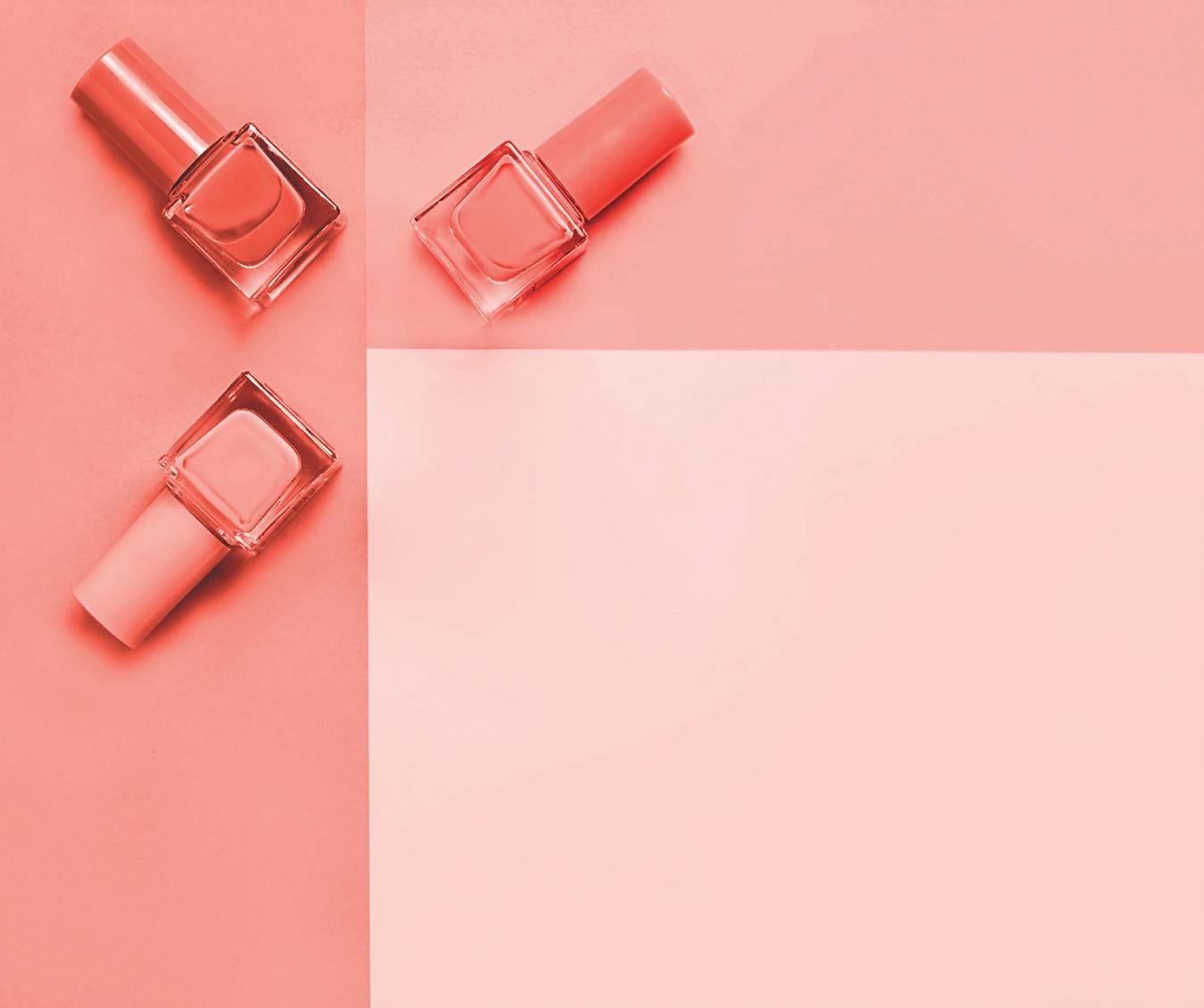
4 minute read
Coming Clean with Beauty
COMING CLEAN Beauty WITH
BY JULIE PRESCOTT
Do you know where your personal and beauty products come from? We ask where and how our food is grown—what we put into our bodies—but what about what we put on our bodies? Our skin, the biggest organ, absorbs everything we put on it and transfers it into our bloodstream, so one of the healthiest things you can do is clean up your personal care product act.
in our industry. We’re tapping into
new information every season.”
QHow does Nature’s Fare Markets define clean beauty? Clean beauty means clean and safe ingredients in the products we use on ourselves and our children—and making sure they are sustainably and ethically sourced. The beauty industry is still under-regulated and, depending on where the products are made, they are subject to different guidelines and standards. So, we work hard to screen every health and beauty product we carry, just as we do for every product on our shelves. Q Is it true that clean products are more expensive? While you can pay more for products made with naturally derived ingredients, we offer a range of budget-friendly, mid-range, and splurge-worthy options. We’re witnessing a revolution in this industry, fueled by savvy customers, and it’s exciting because the innovation is phenomenal. Q What can Nature’s Fare customers expect? We scrutinize every product to make sure it’s sustainable, ethically sourced, safe, and effective. We check and cross-check all the ingredients, and even talk to the manufacturer if we need to dig deeper. We check formulations (because even natural ingredients can be toxic), processes, preservatives, and if colour or scent have been masked with chemicals.

We also have knowledgeable, well-trained staff to help you to choose a product that’s right for you—and to colour match any of our cosmetic lines. Q What are some clean beauty trends? Trends include a desire for fewer ingredients, less waste, more biodegradable and sustainable packaging, and more refillable items for everyday essentials—deodorants, shampoo, hand soap, baby products—that are safe, clean, and non-toxic.
Health Canada is also becoming more proactive to regulate and develop better standards, better labelling, and more access to information for consumers. You’ll soon be able to scan a product to learn about its ingredients.
True innovation is coming from smaller companies—people who are so passionate about changing the industry—and we want to work with them and support them.
OUR QUALITY STANDARDS At Nature’s Fare we carry the highest quality beauty, hair, and body care products we can find. We continually research and re-evaluate the products on our shelves to ensure all of our products are clean and safe for you and your family. We cross-reference all ingredients with Environmental Working Group ratings. Currently on our ‘nogo list’ are over 100 ingredients common in conventional body care products, which include phthalates, microbeads, triclosan, BHT, BHA, and aluminum chloralhydrate. Product selection may vary from store to store. If you have any questions, please ask for assistance where you shop.
“Every single
product is evaluated
for quality
of ingredients,
experience, and

efficacy. None
have been tested
on animals.”
Sources: https://environmentaldefence.ca/toxicten/ https://www.ewg.org/skindeep
THE TOXIC TEN FROM ENVIRONMENTAL DEFENCE 01 Butylated hydroxyanisole (BHA) & butylated hydroxytoluene (BHT) Used as preservatives in hair products, makeup, sunscreen, deodorant, fragrances, and creams. Linked to endocrine (hormone) disruption and skin irritation. 02 Formaldehyde & formaldehyde releasing agents Often used as hardeners in nail polishes (AKA methylene glycol.) Releasing agents (like diazolidinyl urea and quaternium-15) are often used as cosmetic preservatives, and release formaldehyde. Linked to cancer and skin sensitivity. 03 N-Ethylpentedrone (NEP) & N-Methyl-2-pyrrolidone (NMP) Typically used in synthetic eyelash and nail glues, nail polish removers, and lotions. Can cause skin, eye, and lung irritation. Potentially toxic to development when exposure is chronic. Exposure at developmentally critical periods during pregnancy may affect health and weight of the fetus. 04 Oxybenzone Blocks ultraviolet light in sunscreens. Endocrine (hormone) disruptor and harmful to coral reefs, fish, and marine animals like dolphins. Other potentially harmful ingredients to avoid include: octinoxate, 3-benzylidene camphor, 4-methylbenzylidene camphor, octocrylene, benzophenone-1, benzophenone-8, OD-PABA, nanotitanium dioxide, and nano-zinc oxide. 05 Parabens Ingredients that end with the word “paraben” like methyl-, butyl-, propyl-, and ethyl-paraben. Used as preservatives in cosmetics and personal care products. Suspected endocrine (hormone) disruptors. 06 Per- and poly-fluoroalkyl substances (PFAS) Ingredients with “fluoro” in name. Also known as “forever chemicals” for being extremely persistent in the environment. Often added to products like moisturizers, dental floss, foundation, and concealer to make them waterproof or give them a “slippery” feel. Can accumulate in the body and are linked to cancer and thyroid disease, among other adverse health effects. 07 Phthalates Added to fragrance mixtures as stabilizers and to make them last on the skin longer. Endocrine (hormone) disruptors, toxic to reproduction, and impair brain development. Increasingly linked to a decrease in male fertility. 08 Siloxanes Cyclomethicone, siloxane D4, D5, and D6. Silicone-based compounds used to moisten or prime skin and hair. Linked to skin irritation. Washed down the drain, they are toxic and persistent in aquatic ecosystems and fish. 09 Talc An absorbent in pressed and loose powders. Linked to ovarian cancer if applied to genital area. Inhaled as powder may be harmful to lungs. While most talc products in Canada meet strict purity standards, some may be contaminated with cancercausing asbestos. 10 Toluene May be listed as benzene or methylbenzene. Used in nail polish to make the polish stick to the nail. Respiratory toxicant and may cause headaches, dizziness, and irritation.

A Skin-Deep Reference Check Curious about an ingredient? Check out the Environmental Working Group’s (EWG) Skin Deep Database at www.ewg.org/skindeep which hazard-rates thousands of ingredients and almost 70,000 products.










